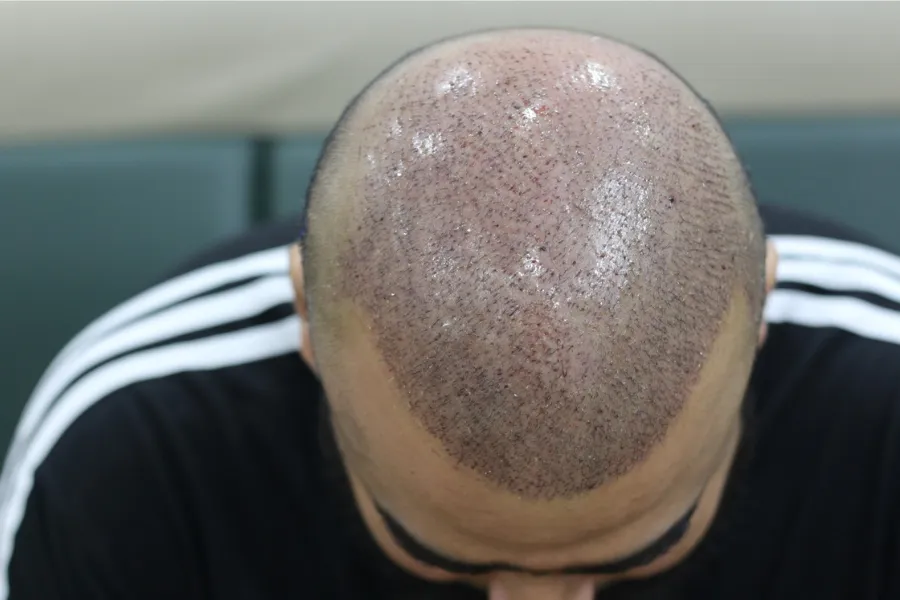Hair loss can affect anyone—men or women—at different stages of life. It not only alters one’s appearance but can also impact confidence and self-esteem. Fortunately, hair transplant procedures have advanced significantly, offering natural-looking and long-lasting results. Understanding how transplanted hair behaves, grows, and maintains its appearance over time is crucial for setting realistic expectations. If you are considering a Hair Transplant in Dubai, this guide will explain everything you need to know about how transplanted hair grows and what makes it appear natural.
Understanding Hair Transplantation
A hair transplant is a surgical technique designed to restore hair in areas affected by thinning or baldness. It involves relocating healthy hair follicles from one part of the scalp—known as the donor area to another region that lacks sufficient hair, called the recipient area. The donor area is usually the back or sides of the scalp since these regions are genetically resistant to hair loss.
| Technique | Description | Benefits |
|---|---|---|
| FUE (Follicular Unit Extraction) | Individual hair follicles are extracted and implanted into the bald areas. | Minimally invasive, leaves no linear scar, and quicker recovery. |
| FUT (Follicular Unit Transplantation) | A strip of scalp is removed from the donor area, and follicles are separated for transplantation. | Allows for a larger number of grafts in one session. |
How Transplanted Hair Grows
Transplanted hair follows the same natural growth cycle as the rest of your hair. However, the process occurs in distinct stages after surgery. It is important to understand these stages to manage expectations.
| Stage | Timeline | Description |
|---|---|---|
| Shedding Phase (Shock Loss) | 2–6 weeks post-surgery | Newly transplanted hairs fall out—this is a natural part of the process. The follicles remain intact beneath the scalp. |
| Dormant Phase | 2–3 months post-surgery | The follicles rest and prepare to regrow. Visible hair may be minimal during this time. |
| Growth Phase (Anagen) | 3–6 months post-surgery | New hairs begin to emerge. They may be thin at first but gradually thicken. |
| Maturation Phase | 9–12 months post-surgery | The transplanted hair gains density, texture, and length—appearing natural and permanent. |
Why Transplanted Hair Grows Like Normal Hair
The secret behind the natural growth of transplanted hair lies in the donor dominance theory. This principle states that hair follicles retain their genetic characteristics even when moved to another area. In other words, if the donor follicles are resistant to hair loss, they will continue to behave the same way after being transplanted.
- Genetic Retention – Transplanted follicles maintain their original growth patterns and resistance to DHT (dihydrotestosterone), the hormone responsible for pattern baldness.
- Natural Hair Cycle – Once settled, transplanted follicles go through the same anagen (growth), catagen (transitional), and telogen (resting) cycles as other scalp hairs.
- Permanent Root Integration – After implantation, the follicle establishes new blood supply connections, ensuring continued nourishment and natural growth.
Factors That Influence Transplanted Hair Growth
Although transplanted hair behaves like normal hair, several factors influence its overall growth rate and appearance.
- Surgeon’s Expertise
A skilled and experienced hair transplant specialist ensures precise follicle placement, natural hairline design, and optimal graft survival rates. - Post-Operative Care
Following aftercare instructions—such as avoiding scratching, wearing hats too soon, or using harsh shampoos—is vital for proper healing. - Scalp Health
A healthy scalp promotes strong hair follicle anchoring and nourishes the transplanted roots for sustained growth. - Lifestyle and Nutrition
Adequate hydration, a protein-rich diet, and essential vitamins like biotin and zinc support hair growth and density. - Hormonal and Genetic Factors
While transplanted hair is resistant to DHT, surrounding non-transplanted hair may continue to thin if underlying genetic factors persist.
Can Transplanted Hair Be Treated Like Natural Hair?
Yes—once the transplanted hair has fully grown, it can be managed just like the rest of your hair. Patients can:
- Cut or trim their transplanted hair regularly.
- Style or dye it according to personal preference.
- Use shampoos and conditioners designed for normal hair types.
- Apply gentle heat styling tools after the scalp has completely healed.
FAQ’s
How long does it take for transplanted hair to grow fully?
Most patients notice visible hair growth within 3 to 4 months, but it may take 9 to 12 months to see the final results.
Does transplanted hair require special care?
Initially, gentle care is essential. After healing, transplanted hair can be treated just like normal hair without restrictions.
Will transplanted hair fall out again?
The transplanted follicles are resistant to hair loss. However, natural hair around the transplanted area may thin with age.
Can I style or color transplanted hair?
Yes. Once the scalp heals, you can style, color, or cut transplanted hair as you wish.
Is the growth rate of transplanted hair the same as natural hair?
Yes, once it begins growing, transplanted hair follows the same growth rate and cycle as your normal hair.
Conclusion
Transplanted hairs do grow like normal hair—naturally, permanently, and beautifully. Thanks to advanced techniques like FUE and FUT, the results are virtually indistinguishable from natural hair. With proper care, expert guidance, and patience, individuals can enjoy lasting confidence and a fuller head of hair. At Dynamic Life Clinics, the focus is on delivering safe, precise, and natural-looking hair restoration results through cutting-edge technology and expert care.









